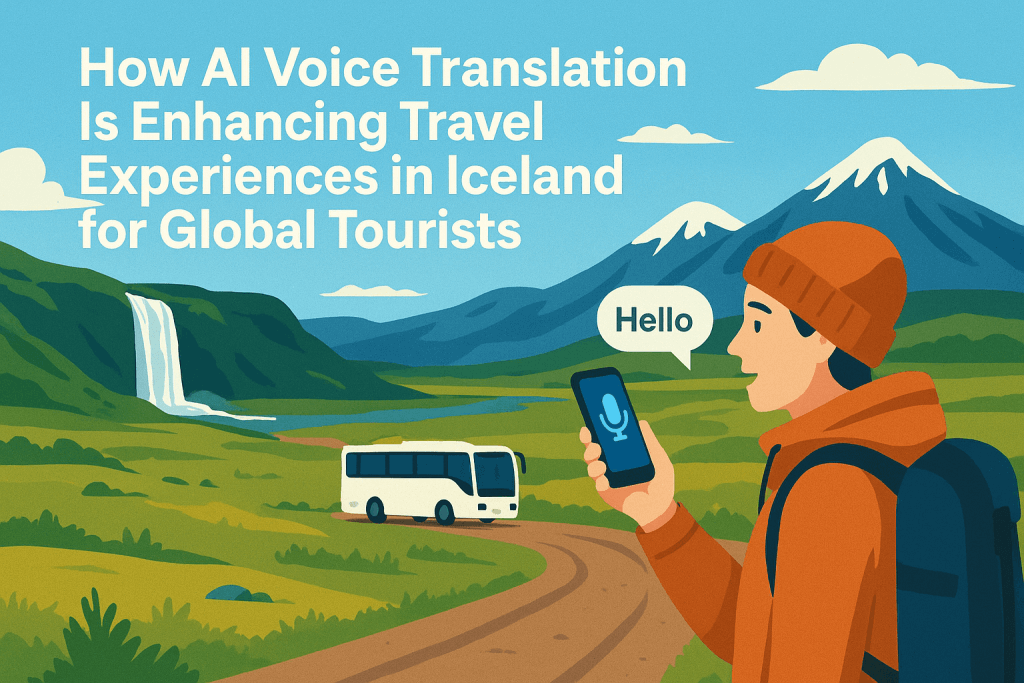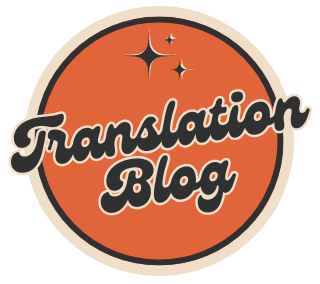Iceland, with its majestic waterfalls, geothermal springs, volcanic landscapes, and stunning northern lights, has long been a bucket-list destination for global travelers. But for non-Icelandic speakers, navigating this Nordic wonderland hasn’t always been seamless—until now. Enter AI voice translation technology—a game-changer that is transforming how tourists communicate, connect, and explore in Iceland.
From real-time voice translation apps to multilingual virtual guides powered by tools like Murf.ai, artificial intelligence is bridging language barriers like never before. In this blog, we explore how AI voice translation is enhancing travel experiences in Iceland, and why it’s a must-have for modern-day adventurers.

The Language Landscape in Iceland: A Challenge for Global Tourists
Icelanders are known for their strong command of English, especially in urban centers like Reykjavík. However, when venturing into rural areas or engaging with older locals, tourists often face communication hurdles. Signboards, historical narratives, or cultural explanations may be in Icelandic, leaving travelers dependent on tour guides or printed translations.
Moreover, pronunciation of Icelandic place names—think “Eyjafjallajökull” or “Þingvellir”—can be intimidating for visitors. This is where AI-powered voice translation offers immense relief and confidence for travelers, making the country more accessible than ever.
What Is AI Voice Translation?
AI voice translation involves the use of artificial intelligence to convert spoken words from one language into another in real-time. Unlike traditional text translation, voice translation captures tone, pace, and context, delivering a natural conversational experience.
Platforms like Murf.ai go one step further by offering AI-generated multilingual voices that can narrate travel content, customer service interactions, and even guided tours—bridging the language gap through seamless audio experiences.
How AI Voice Translation Is Transforming the Iceland Travel Experience
1. Breaking Language Barriers in Real-Time
Whether asking for directions to the Blue Lagoon or ordering traditional lamb stew at a local eatery, tourists can now use AI voice translators to converse in real-time. This eliminates awkward misunderstandings and enhances cultural exchanges between travelers and locals.
Apps powered by AI translation can detect and speak Icelandic, English, German, French, Mandarin, and more—enabling smoother interactions across tourist hotspots like Gullfoss, Akureyri, and Vik.
2. Personalized Audio Travel Guides
Tour operators and tourism platforms in Iceland are now leveraging AI voice narration to offer multilingual audio guides. For example, a tourist on a self-drive Golden Circle tour can plug into an app where Murf-style voices explain historical and geological facts in their native language—hands-free and in real-time.
This personalization boosts engagement and makes the journey more enriching, especially for tourists who prefer independent travel over group tours.
3. Enhanced Accessibility for All Travelers
AI voice translation isn’t just about language—it also boosts accessibility. Hearing-impaired tourists can use text-to-speech and speech-to-text integrations. Similarly, visually impaired visitors can listen to AI-generated descriptions of Icelandic landscapes and historical landmarks.
For example, Murf’s voice solutions can convert text-heavy tour content into lifelike audio, creating inclusive travel experiences for all.
4. Multilingual Customer Support for Hotels & Rentals
Many hotels, Airbnbs, and local guesthouses in Iceland now integrate AI voice bots into their customer support. Instead of struggling to understand late-night check-in instructions or calling for assistance in broken English, travelers can get instant help in their language.
With tools like Murf’s voice AI API, property owners can offer automated, multilingual customer service, improving guest satisfaction and review ratings.
5. Smoother Transportation Experiences
Navigating Iceland’s ring road, public buses, or domestic flights can sometimes be daunting for non-Icelandic speakers. AI voice assistants embedded in transport apps or kiosks help tourists buy tickets, understand routes, and get updates—making it easier to travel across the country stress-free.
Imagine arriving at Keflavík International Airport and hearing AI-powered multilingual announcements customized to your preferred language—it’s happening now.
Real-World Use Case: Guide to Iceland + Murf Voice Integration
Platforms like GuideToIceland.is, which host thousands of travel products including tours, accommodations, and blogs, can benefit massively from AI voice integration.
By embedding Murf’s AI-generated voiceovers into blog posts or tour pages, they can:
- Offer multilingual narrations of travel guides.
- Assist visually impaired users.
- Improve dwell time and engagement for SEO.
- Convert static text into an immersive experience for on-the-go users.
For example, a blog about the Northern Lights season in Iceland can be instantly turned into a voice-narrated audio file in French, Spanish, or Mandarin—perfect for international tourists planning their itinerary.
SEO Benefits of Using AI Voice Translation in Travel Platforms
Incorporating AI voice translation on travel websites not only enhances user experience but also delivers measurable SEO benefits:
- Increased Engagement: Visitors stay longer on pages with audio content.
- Improved Accessibility Scores: Boosts website ranking in Google’s algorithm that favors inclusivity.
- Multilingual Reach: Content can reach a wider, global audience in multiple languages.
- Voice Search Optimization: As more users turn to voice search, AI-generated audio improves discoverability on platforms like Google and YouTube.
Future of AI Voice Translation in Icelandic Tourism
Looking ahead, AI voice translation is expected to power more immersive travel experiences in Iceland:
- Voice-enabled AR guides for glacier hiking or lava cave tours.
- AI-narrated museum exhibits in Reykjavik, offering rich storytelling for international guests.
- Smart rental cars with voice-enabled road trip narrators—transforming Iceland’s epic drives into cinematic experiences.
With Iceland continuing to attract eco-tourists, adventure seekers, and nature lovers from all over the world, the integration of AI voice translation will become essential to delivering personalized, inclusive, and frictionless travel.
Final Thoughts
As travel rebounds globally, Iceland stands at the forefront of embracing technology to enhance its tourism infrastructure. With AI voice translation tools like Murf, travelers can now enjoy authentic local interactions, self-guided adventures, and greater accessibility—without the language barrier standing in the way.
For tourists planning their next Icelandic getaway, using AI voice translation apps isn’t just convenient—it’s transformative. And for travel businesses, the time to integrate voice AI into customer journeys is now.

